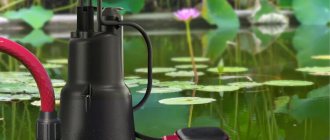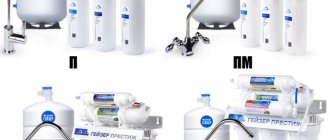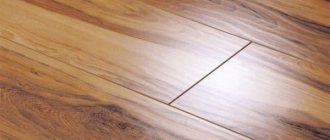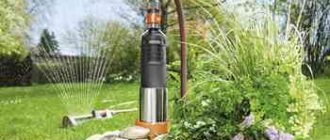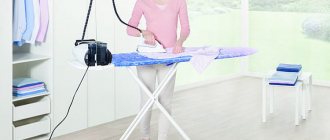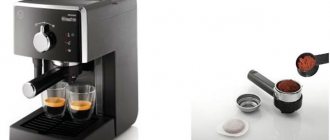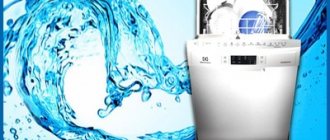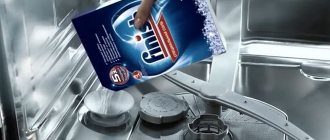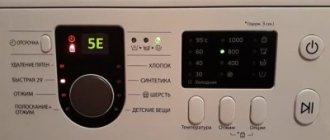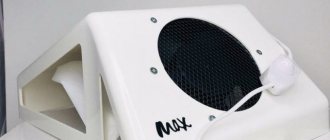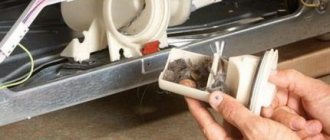We have all known for a long time that drinking water from the tap or from a well is a risky undertaking. And even not drinking, just using such water for technical needs can be dangerous - it can damage a gas boiler, plumbing, or shower.
In country life, high-quality water purification is of utmost importance, but there are no universal solutions: the filter must be selected depending on the composition and quality of the water. In this article, together with a specialist, we understand what a filter for a sink should be and how to choose it correctly.
Why do you need water analysis?
Residents of the countryside, as a rule, take water for life from a well or borehole. And if water from different surface sources is more or less similar, then water from two different wells will most likely be radically different. Moreover, water from a well may contain substances that are generally absent from surface sources. Therefore, the approach to its purification should be more serious, and first you need to find out what kind of water you have to deal with.
Roman Podobedov, Candidate of Chemical Sciences
The first thing you need to pay attention to is the total salt content. It can be either very low or sky-high. The norm for drinking water is 250-400 mg/l, the maximum permissible concentration is 1000 mg/l. In a well, this value can be exceeded several times. Three more parameters that require attention: hardness, iron and manganese content. When designing water treatment from a well, it is also necessary to measure the nitrate content; Exceeding the maximum permissible concentration for nitrates is a common problem. There may also be problems with excess fluoride content. In our work, we even encountered wells with arsenic, radon, nickel and other non-specific contaminants.
It is impossible to assess the composition of water visually and using the “pour water into a two-liter plastic bottle, shake and sniff” method - an analysis must be done before installing the filter.
As our expert says, without analysis, only a few of the most obvious problems can be identified. They are collected in a small cheat sheet.
| Problem | Signs |
| Presence of suspended particles. | Cloudy, opalescent water. |
| Rigidity. | Scale quickly forms on the kettle and a film forms on hot drinks. |
| Iron. | The water has a yellow coating and forms smudges on plumbing fixtures |
| Hydrogen sulfide. | Specific smell of rotten eggs. |
Roman Podobedov
The problem is that most particularly toxic substances (nitrates, fluorine, heavy metals) cannot be detected by eye or using improvised means. It is better to do a full water analysis.
How and why to measure water hardness
The need for constant monitoring of liquid parameters is due to the negative impact of the minerals it contains on human health and the operation of electrical appliances. Hardness measurement is carried out in domestic and industrial conditions. For this you can use special devices.
Hardness is determined by the amount of magnesium and calcium ions; units of change – mEq/l. To find out the level of hardness of the transported liquid, indicate the number of magnesium or calcium ions in 1 liter of water. It is impossible to determine the value of this parameter yourself.
There are generally accepted standards that are regulated by GOST 31865-2012. Thus, a level of no higher than 7 mEq/L is considered acceptable. Water with this hardness level can be used for drinking.
To measure hardness, you can use a special device.
Separate filters for softening well water sometimes provide hardness of up to 10 mEq/l. This is an acceptable value, but only in certain cases. To find out under what conditions such water can be used, regulatory documentation is studied.
In everyday life, an increase in hardness to 5 mEq/l is immediately felt: scale begins to form on the heating element, white marks remain on the metal sink, and a thin film appears on the brewed tea.
If there is free time, water samples are taken to the laboratory to obtain results on the level of hardness.
A simple way to check water hardness level
Simpler ways to determine this parameter:
- special test strips are used (they can be purchased at home appliance stores, coffee machines) - when using such a product, a change in the material of the tester is noted due to contact with water of increased hardness;
- You can do a simple experiment.
To sell the latter, you will need laundry soap (72%), distilled water, a glass container, scales, and a measuring container. Instructions:
- Take 1 gram of soap (scales are used to measure the exact amount).
- Distilled water is heated, but not brought to a boil.
- Combine the liquid and soap (the latter should dissolve).
- Add distilled water to the container (to a level of 7 cm above the bottom).
- Prepare 0.5 liters of cold water. Pour a soap solution into it and mix; this creates foam. To determine hardness, you need to measure the height of the solution that is below the foam. 1 cm binds in 0.5 liters of water the amount of salts corresponding to 2°dH. If 4 cm of soap solution was added to obtain foam, then the hardness is 8°dH.
Features of filters for washing
You can remove unwanted impurities from water at home by placing a three-stage drinking water purification system under the sink and connecting it to the pipe of the house water supply system (or the cold water main). You will need to install a separate faucet for purified water into the sink or countertop. Water, sequentially passing through all three stages of purification, gets rid of mechanical impurities, chlorine and organic and organochlorine impurities, heavy metals, undesirable tastes and unpleasant odors.
There are different options for completing the flow filter, and, depending on them, you can reduce the iron content and water hardness, as well as get rid of bacteria. Self-locking systems have now been developed that do not allow the filter elements to unscrew when the filter is even under strong pressure. Using the instructions, you can install such a filter yourself, in just half an hour.
Many people are bothered by the need to frequently change cartridges, but modern filters are designed in such a way that there are no problems with this - everything is done in one touch. There is no need to use a special key, wash the flasks and perform other tedious rituals.
Roman Podobedov
The easiest way to change cartridges is in three-stage cleaning systems - the operation takes 30 seconds and can be performed with one hand. The main thing is to remember to turn off the water before replacing! The frequency of replacing filter elements depends on the quality of the source water and the volume of its consumption (family size, whether they cook at home, whether they cook with filtered water). Typically, the frequency of replacing cartridges in washable filters is once every 6-12 months. But this can happen more often with high initial water hardness or a large family.
Analysis and classification
At home, it’s easy to get an idea of the quality of water:
- First of all, it is recommended to brew the tea and examine it carefully . If the drink turns out cloudy, the color is not bright, the aroma is poorly felt, then the water is of poor quality.
- You can try washing it . If insoluble flakes have formed in the container, the solution does not foam, which means that the water contains an excess of hard salts. Obtaining an accurate result is possible after analysis in the laboratory. The service is provided by sanitary stations and water supply companies.
Important. The hardness of one type can be easily removed by boiling (temporary), while the hardness of another type cannot be removed even with prolonged heating to 100 °C (permanent). Total hardness is understood as the total content of salts of the first and second types.
When boiling, acid salts of carbonic acid (hydrocarbonates) and calcium and magnesium cations precipitate.
When heated to boiling point,
the following calcium and magnesium salts do not precipitate:
- sulfate,
- chloride,
- silicate,
- nitrate,
- phosphate.
To evaluate effectiveness, it is important to have an understanding of the units of stiffness used. According to GOST of 2014, hardness is measured in conventional units - degrees (°Zh).
One such unit is equal to a salt concentration of 0.5 mol in mg/dm3 (g/m3), which is equal to 1 mEq/L. Thus, 1°F is ½ mmol/l .
According to SanPiN standards, taking into account changes from 2021, the maximum acceptable concentration in drinking water is 7 mEq/l. In some regions, with approval from health authorities, a maximum of 10 mEq/L is allowed.
Sorption filters and reverse osmosis: pros and cons
Flow-through filters for sinks are valued primarily for their speed of cleaning - consumers instantly receive clean water.
Roman Podobedov
In-line filters have two different cleaning principles. The first is sorption filters. They contain various sorbents (charcoal, ion exchange resin) that adsorb contaminants on their surface. The second type is reverse osmosis filters with a membrane whose pores allow only water molecules to pass through. On this membrane, the water flow is divided into two parts: 20-25% goes to the clean water tap, the rest goes to the drainage.
Which system is better? They both have strengths and weaknesses.
Roman Podobedov
The strength of reverse osmosis is that it can purify water of virtually any initial composition to the state of H2O. There are no alternatives to reverse osmosis if your water has very high iron levels (above 1.5 mg/l), nitrates or fluorides, risk of radioactivity or microbiological contamination, including viruses.
At the same time, according to the expert, this design also has a number of disadvantages:
- Water after reverse osmosis filters is absolutely “empty”; it does not contain not only harmful, but also useful substances. Drinking such water without additional mineralization for a long time is unsafe for health;
- Water consumption increases fourfold, since only one part of the water goes into the tap, and 3-4 parts into the drainage.
- To “push” water through the membrane, a pressure of at least three atmospheres is required. If there is no such pressure in the pipes, a pump and an electrical supply are necessary;
- Such systems are more expensive.
Unlike reverse osmosis filters, sorption filters are capable of purifying water only from those contaminants for which they contain a sorbent.
Roman Podobedov
This list includes all the contaminants characteristic of tap water: chlorine and its compounds, iron and heavy metals, odor, color, suspended solids, hardness up to 6 mEq/l. At the same time, such filters are cheaper and less sensitive to inlet water pressure and leave macronutrients that are necessary and beneficial for the body in the water.
Tips for choosing
If you are thinking about purchasing a water softener, then listen to our advice on choosing a device. They will help you avoid making mistakes and wasting money.
- Be sure to do a water analysis to know exactly the hardness indicators, because different types and models of softeners cope with the problem differently.
- Pay attention to the performance of the device and the permissible water pressure at the inlet; it is better to have a supply of these indicators.
- Determine the installation location of the device in advance so as not to make a mistake in the dimensions of the device.
- Currently, there are fully automated water softeners on sale, so if your budget allows, buy a smart cleaning system.
- And of course, if you have the opportunity to buy an ion-exchange softener, then it is better to opt for it. If you cannot afford such luxury, then take a polyphosphate or magnetic softener. In any case, hard water must be dealt with.
Is it possible to do without a filter?
Some people generally doubt the advisability of installing a filter: since the water from your own well is not suitable for drinking or cooking, it is better to take it in stores, from a spring, or bring it from friends. It will be more reliable and cheaper.
Kasap IvanForumHouse Member
Cheap filters will not clean the salts, but expensive ones will ruin them, and it’s not a fact that they will clean them properly. And their cleaning efficiency drops every day until the next cartridge replacement or addition of cleaning ingredients.
But, as our expert says, there is no need to completely remove salts from water; our body needs them. You need to remove harmful and toxic substances, and the filter copes with this task perfectly if:
- choose it correctly;
- change cartridges regularly (the cost of the kit will in any case be 100% lower than the cost of the corresponding volume of bottled water).
All well problems apply to springs; they may contain various non-specific contaminants that cannot be detected with the naked eye.
Roman Podobedov
If you regularly go to a spring, we recommend that you first take the analysis from it to the laboratory and check it for at least 15 parameters. The most important thing: microbiology and organics, hardness, iron, manganese, nitrates, fluorides. In our experience, the maximum permissible concentration for nitrates is exceeded in more than 60% of springs, and in regions with active agricultural activity - in 100%.
How to choose the right filter for water purification
When choosing a filter, you should be guided by certain standards and generally accepted technical data.
- Filter type. Water purification systems have the following varieties: jug type, rough or pre-treatment, mainline, special devices for normalizing the level of iron, reverse osmosis, “under the sink”. Almost every type of filter can have an additional section that softens the liquid. Before purchasing a device, you should definitely clarify this feature of the configuration.
- Degrees of purification. Of course, the maximum number of purification levels guarantees cleaner and tastier output water. Especially if these are reverse osmosis systems, in which 5 to 6 degrees of purification can be installed. This amount includes the removal of large particles, carbon liquid purification, ionization and mineralization, as well as the main function - softening.
- The presence of a reverse osmosis system, which is extremely effective due to its design features due to the presence of a membrane. A reverse osmosis system allows you to filter your water to a completely different level, keeping out even the smallest contaminants.
Choosing the right filter will allow you to purchase a device with maximum functionality (cleaning), which means clean and tasty water at the output. A filter for hard water will be an ideal solution for both an apartment and a home.
How to choose filters taking into account the characteristics of water
When choosing a flow filter for your water, you need to clearly define what problem it should solve, and then be guided by the name or description of the filter.
Roman Podobedov
There is a filter that fights unpleasant odors and improves the color and smell of water. If you have problems with scale, there are also appropriate filters; there are designs that are used if “rusty water” has a metallic taste. If the source water is not chlorinated, it is recommended to use systems that contain a module with a special ultrafiltration membrane that provides protection against bacteria.
When choosing a filter, you need to focus on its ability to make your water drinkable, solve existing problems and not fall for the tricks of marketers.
110402FORUMHOUSE Member
How beautifully their manufacturers write about filters, it’s simply a masterpiece! As a complete sucker in this area, it’s hard for me to navigate.
Here are some things you should be wary of in filter descriptions:
Roman Podobedov
Among the tricks of marketers, I would include “perpetual motion machines” - filters that work for years without maintenance and at the same time clean “everything”; all kinds of water structurers (this has not been scientifically proven); water purification using magnetic fields, devices that make “living” and “dead” water - terms that are not fully defined by experts.
In addition, our expert advises buying filters from well-known brands in large chain stores: trusted manufacturers value their reputation and will not attribute properties to filters that they do not possess. And large chains carry out a fairly strict selection and testing of both manufacturers and their products before putting the filter on the shelf.
Roman Podobedov
And when purchasing, it is important to carefully review the information on the packaging and in the passport; the operating parameters of a given filter device are usually clearly indicated there.
How to choose a household filter for hard water
A number of parameters are taken into account, the main one of which when choosing a filter for softening water from a well is the composition. It is recommended to first determine what substances and inclusions are contained in the liquid. To do this, you can take samples to the laboratory. Based on the results, a softener option is selected: a highly specialized device that controls the level of hardness, or a universal system that provides additional cleaning.
Another important criterion when choosing is the intensity of fluid flow, its volume. Based on this information, filters with different capacities and different types of section filling are selected.
The installation location is also taken into account. Water softening units for washing are selected if multi-stage cleaning is planned. For comparison, the main filter for hard water is necessarily located on the pipeline, and an insertion is made into the pipe.
The cost of the devices also plays a role. It depends on the functionality and efficiency of the filtration system. It should be taken into account that prices in Moscow and the regions may differ slightly.
Jug filters
This is a universal type of device. The main function is to purify the liquid. As mechanical particles and organic substances are removed, there is a delay in the structure of the cartridge and a certain amount of minerals.
As a result, the liquid is not only purified, but also becomes softer. Jug filters are compact. For optimal performance, it is necessary to replace the cartridge on time.
Ion exchange stationary installations
There are options:
- a model designed to replace the contents (while the flask itself can be in use for a long time);
- filters are in the form of cartridges, they do not open, so after a certain period you need to replace the consumables;
- devices in the form of cylinders, in this case the method of regeneration of ion-containing resin is used.
In everyday life it is easier to use the first 2 options. However, the latter type is distinguished by its long service life and high efficiency. It is advisable to install it if the water flow is high.
Magnetic and electromagnetic devices
Such filter models are mounted on a pipeline, which ensures that all liquid supplied to the consumer is cleaned of salts. It is recommended to combine the devices with osmotic systems. Moreover, the latter improve the quality of water for food purposes (they are installed under the sink), and magnetic and electromagnetic ones – for washing and water procedures.
Reverse osmosis filters
This option is gradually gaining popularity. Installed under the sink. The liquid goes through several stages of purification, as a result of which it is deprived of harmful components and acquires an improved taste and smell. However, this model is inferior to its analogues in terms of cost; its purchase will entail significant costs.
How to reduce water hardness using chemicals
Various methods are used for softening:
- Reagent - based on the entry of H2O into a reaction with many substances, after which the liquid becomes softer, salts precipitate. The following reagents are used: soda ash, manganese solutions, lime, sodium orthophosphate.
- Electrodialysis is the removal of salts under the influence of electric fields.
- Distillation - the system includes installations for evaporation, sedimentation and collection of condensate.
- Cationization - a granular charge consisting of ion exchange resins is used. Filters that reduce water hardness capture salt cations, resulting in purification to the required parameters.
- Nanofiltration and picofiltration are used in reverse osmosis lines with different diameters of membrane impurity traps.
Reagents are introduced into various zones of the installation to purify water from hardness: chlorine - into suction water pipes, coal - before ion-exchange filters, ammonia is added to the filtered liquid.
Ion exchange devices
The filter contains an ion exchange material - a special resin, when passing through which the water replaces calcium and magnesium ions with sodium ions. As a result, purified water becomes softer.
The principle of ion exchange is used in different types of filters:
- in jug filters for which a corresponding replacement cartridge for water softening is selected; in filters
- faucet attachments;
- in main filters;
- in multistage systems.
After the resource of the ion exchange resin has been exhausted, its properties can be restored using ordinary table salt. This is not easy to do manually for cartridges; regeneration is incomplete, and after several cycles the filling or cartridge must be replaced.
In cabinet or column-type softening systems, restoration of the working capacity of the resin occurs automatically. For this purpose, special purified tableted salt is used, which allows you to extend the service life of the backfill up to 10 years!
Advantages:
- High performance and long cartridge life.
- Reliable protection against scale.
- Effectively softens even very hard water.
- Ability to work at any pressure in the pipeline.
- Food grade ion exchange resin suitable for drinking water treatment.
- Soft water after such a filter is excellent for bathing and has a beneficial effect on the skin and hair.
USEFUL INFORMATION: Do-it-yourself pipeline: methods of connecting PVC pipes
Flaws:
- Periodically you need to change the water softening cartridges or backfill.
- You can only filter cold or warm water, because during ion purification, the temperature of the liquid should not exceed 40 ° C.
Conclusions on the topic
Be sure to select a softener based on the intended use. A main device is suitable for protecting household appliances. If you want to get drinking water, buy a reverse osmosis unit or a four-level filter system.
Be sure to find out whether you need such cleaning by requesting data from Vodokanal. If you pump water from your own well or borehole, take a sample and submit it for analysis to the SES. Based on the results of laboratory tests, you will be given recommendations on the need for softening and the type of device.
There are regions in which this procedure is not required due to the initial natural softness of the water, which means there is no need to spend money on it.
Please share your own experience in choosing and installing water softening devices in the comments section. Write about the technological and operational nuances known to you. Post photos related to the topic of the article, ask questions.
The need for filtration: what harm does increased hardness cause?
Unfortunately, the water we get from any source can be hard. This indicator depends on the amount of hardness - calcium and magnesium salts. Our filtration systems installed on main pipes (DHW and cold water) will help cope with the problem. Let's see for what aspects of life this is necessary.
Health
You will feel the first negative effects after taking a shower or washing your face with hard water. Hair becomes lifeless, skin becomes dry and begins to peel. These are only external signs. The presence of metal cations can lead to the formation of stones in the bladder and kidneys if such water is consumed, so a softener is definitely needed. In addition, after its use, the liquid acquires more attractive consumer qualities - a pleasant taste, becomes transparent and soft.
Appliances
Hardness is assessed based on the content of sodium salts. At high concentrations, they affect all heating elements of devices - washing machine, dishwasher, kettle, etc. As a result of operation without main filters, scale will form on the heating elements. This coating violates the integrity of the parts and leads to rapid failure.
Pipes and heaters
An unprotected pipeline suffers first. Filtration is especially necessary for people living in private houses, since replacing the water supply system in the entire cottage is a costly affair. And it deteriorates due to poor quality water from the well. Blockages form on the walls, and corrosion may also begin.
Heating devices, for example, boilers or heat exchangers, begin to become overgrown with scale that is harmful to them. Even the plumbing suffers - with bad water it will become clogged more often.
The solution to all problems is to install filtration with a softening function. AP9 offers a wide selection; our consultants will help you decide.
How to choose home equipment
The first factor that influences selection is the degree of contamination. Based on this, you can significantly narrow the pool of applicants at an early stage. The second parameter is the amount of bandwidth. The more liquid passes through filtration, the more serious the unit will be needed. The third point is the price. The combination of these three qualities in optimal proportion will be the ideal choice. Our consultants will be happy to tell you in detail about the nuances and pitfalls of selection.
Jugs
Main table dispenser AquaPro 919H/RO (hot and cold water)
Main table dispenser AquaPro 929CH/RO (cooling/heating)
Floor dispenser AquaPro 311 (empty, without cooling)
To purify a small volume of liquid at home, you can use ordinary jugs with cartridges installed in them. They are able to remove both small particles of impurities and reduce the concentration of calcium/magnesium. You just need to promptly and regularly change the cassette and monitor the cleanliness of the container.
Ion exchange stationary installations
Not the simplest, but durable and thorough option. For high throughput it is ideally suited. One of the disadvantages is that the cylinders have impressive dimensions, and you need to plan a separate space for connecting them. Replacing consumables is required infrequently, so you will save time and nerves.
Magnetic and electromagnetic devices
Ease of installation is a major plus. The device is simply applied to the pipeline and the flow is efficiently cleaned of excess salt and hardness. But for cooking, we still recommend a combination with classic variations. For example, as the next representative of the list.
Reverse osmosis
Increasingly, such containers can be found under sinks in homes in our country. They are popular for a reason. The effectiveness of their work has been proven by many years of testing. Triple filtration produces a product that is more purified than all previous participants in the rating. The only drawback is the rather high price of the entire set. But this is an adequate price for very decent quality.
Water purification from hardness salts - “home” and industrial options
Various methods for reducing water hardness have been scientifically developed and repeatedly tested in practice. There are simple and complex options using effective reagents and special installations equipped with filters that capture suspended matter and salt sediment.
How to reduce water hardness at home
To reduce water hardness, you can use simple methods:
- Pour water into a container, let it sit for several hours, then carefully, without stirring, drain the liquid into another container. When settling, heavy salts form a precipitate that can be disposed of.
- Prolonged boiling eliminates temporary digestive tract: salts are concentrated in scale, the water is purified, and its taste pleasantly changes.
- Freezing followed by thawing is a more troublesome and time-consuming process. If you first heat the water until the first bubbles appear, then quickly cool and freeze, then after thawing you will get a liquid whose composition is close to natural. It goes through a full cycle, reminiscent of the natural cycle of water in nature - evaporation, cooling, freezing, thawing.
Simple “home” methods for purifying water from hardness salts are not suitable if you need to regularly desalinize large water flows supplied to the water supply system or to large-scale production.
